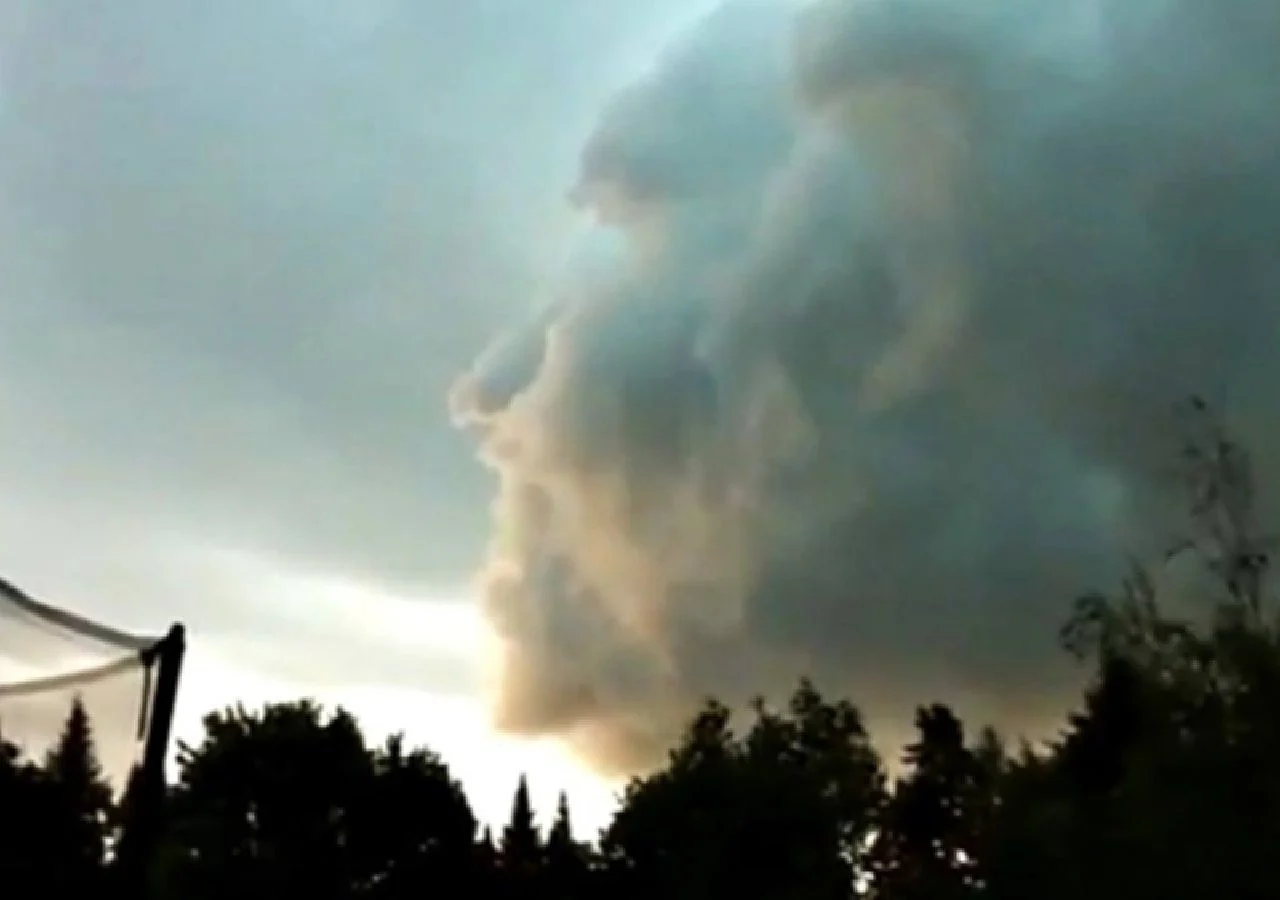Your cart is currently empty!

PAREIDOLIA
In the world of paranormal investigations, one concept often stirs up controversy and skepticism: pareidolia. This phenomenon, deeply ingrained in human psychology, involves perceiving familiar patterns or meaningful shapes in random or ambiguous stimuli, such as clouds, shadows, or even noise. While pareidolia plays a crucial role in human cognition, it has also been at the center of debates within the paranormal community. Let’s take a deep dive into the controversy surrounding pareidolia in paranormal investigations and explores its implications for the field.
Pareidolia is not limited to paranormal experiences; it is a fundamental aspect of the human brain’s pattern recognition system. Our brains are hardwired to detect meaningful information in our environment, which has been a key survival advantage throughout human evolution. This natural tendency to recognize faces, shapes, and patterns, even in randomness, has enabled us to detect potential threats, identify food sources, and navigate our surroundings effectively.
In the context of paranormal investigations, pareidolia often manifests as people seeing faces in photographs, hearing voices in white noise, or interpreting random patterns as signs from the afterlife. Skeptics argue that many paranormal claims can be attributed to this psychological phenomenon rather than genuine supernatural experiences.
One of the main points of contention is the use of evidence in paranormal investigations. Critics argue that investigators often rely on ambiguous visual or auditory data, such as blurry photographs, indistinct audio recordings, or poorly lit video footage. These types of evidence are particularly susceptible to pareidolia, making it difficult to distinguish genuine paranormal phenomena from mere coincidences.
Pareidolia is highly subjective, as different individuals may interpret the same stimulus in varying ways. What one person perceives as a ghostly apparition, another might dismiss as a random pattern. This subjectivity can lead to disputes within the paranormal community and make it challenging to establish conclusive evidence.
Confirmation bias is another concern often linked to pareidolia. Investigators may subconsciously seek out and interpret evidence that aligns with their preconceived beliefs about the paranormal, ignoring or dismissing contradictory data. This can reinforce the perception of paranormal activity while undermining the scientific rigor of investigations.
The rise of technology, particularly in photography and audio recording, has led to an increase in pareidolia-related controversies. High-resolution cameras and sophisticated audio equipment can capture minute details, but they can also amplify the potential for misinterpretation.
Addressing the controversy surrounding pareidolia in paranormal investigations requires a more critical and scientific approach. Here are some suggestions for paranormal investigators and enthusiasts:
Pareidolia is not limited to paranormal experiences; it is a fundamental aspect of the human brain’s pattern recognition system. Our brains are hardwired to detect meaningful information in our environment, which has been a key survival advantage throughout human evolution. This natural tendency to recognize faces, shapes, and patterns, even in randomness, has enabled us to detect potential threats, identify food sources, and navigate our surroundings effectively.
In the context of paranormal investigations, pareidolia often manifests as people seeing faces in photographs, hearing voices in white noise, or interpreting random patterns as signs from the afterlife. Skeptics argue that many paranormal claims can be attributed to this psychological phenomenon rather than genuine supernatural experiences.

Investigators should be aware of the psychological processes at play, including pareidolia, and undergo training to recognize and mitigate its effects on their investigations.
Encourage a more objective analysis of evidence by seeking input from experts in photography, acoustics, and psychology to rule out natural explanations for paranormal claims.
Design controlled experiments to test paranormal hypotheses, reducing the influence of pareidolia and confirmation bias.
Seek to replicate and verify findings independently to establish credibility within the scientific community.
Be transparent about investigation methods, including equipment used and environmental conditions, to ensure the reliability of collected data.
The controversy of pareidolia in paranormal investigations highlights the need for a balanced and scientific approach within the field. While some experiences may genuinely defy explanation, it is essential to acknowledge the role of pareidolia and its potential to mislead investigators. By embracing a more rigorous and critical mindset, paranormal investigators can enhance the credibility of their work and contribute to a more informed discourse on the paranormal. Ultimately, whether one believes in the supernatural or not, understanding and addressing pareidolia is a crucial step towards more credible and objective investigations.
Pareidolia is highly subjective, as different individuals may interpret the same stimulus in varying ways. What one person perceives as a ghostly apparition, another might dismiss as a random pattern. This subjectivity can lead to disputes within the paranormal community and make it challenging to establish conclusive evidence.
Confirmation bias is another concern often linked to pareidolia. Investigators may subconsciously seek out and interpret evidence that aligns with their preconceived beliefs about the paranormal, ignoring or dismissing contradictory data. This can reinforce the perception of paranormal activity while undermining the scientific rigor of investigations.
The rise of technology, particularly in photography and audio recording, has led to an increase in pareidolia-related controversies. High-resolution cameras and sophisticated audio equipment can capture minute details, but they can also amplify the potential for misinterpretation.
Addressing the controversy surrounding pareidolia in paranormal investigations requires a more critical and scientific approach. Here are some suggestions for paranormal investigators and enthusiasts:
Pareidolia is not limited to paranormal experiences; it is a fundamental aspect of the human brain’s pattern recognition system. Our brains are hardwired to detect meaningful information in our environment, which has been a key survival advantage throughout human evolution. This natural tendency to recognize faces, shapes, and patterns, even in randomness, has enabled us to detect potential threats, identify food sources, and navigate our surroundings effectively.
In the context of paranormal investigations, pareidolia often manifests as people seeing faces in photographs, hearing voices in white noise, or interpreting random patterns as signs from the afterlife. Skeptics argue that many paranormal claims can be attributed to this psychological phenomenon rather than genuine supernatural experiences.




 designed and developed by
designed and developed by